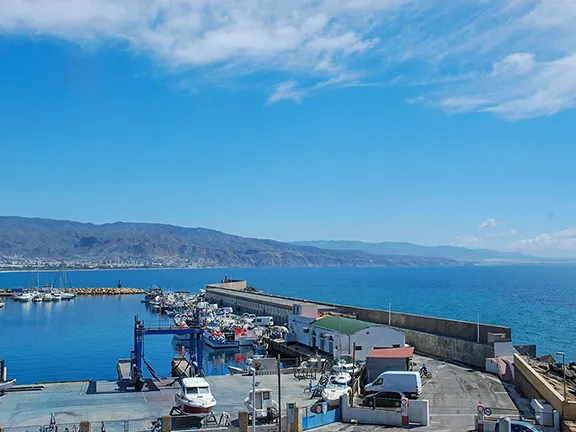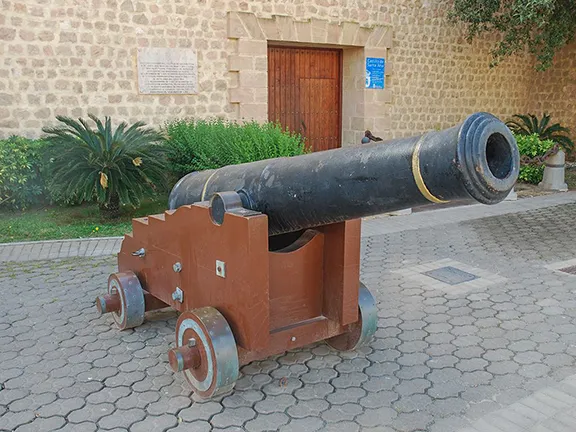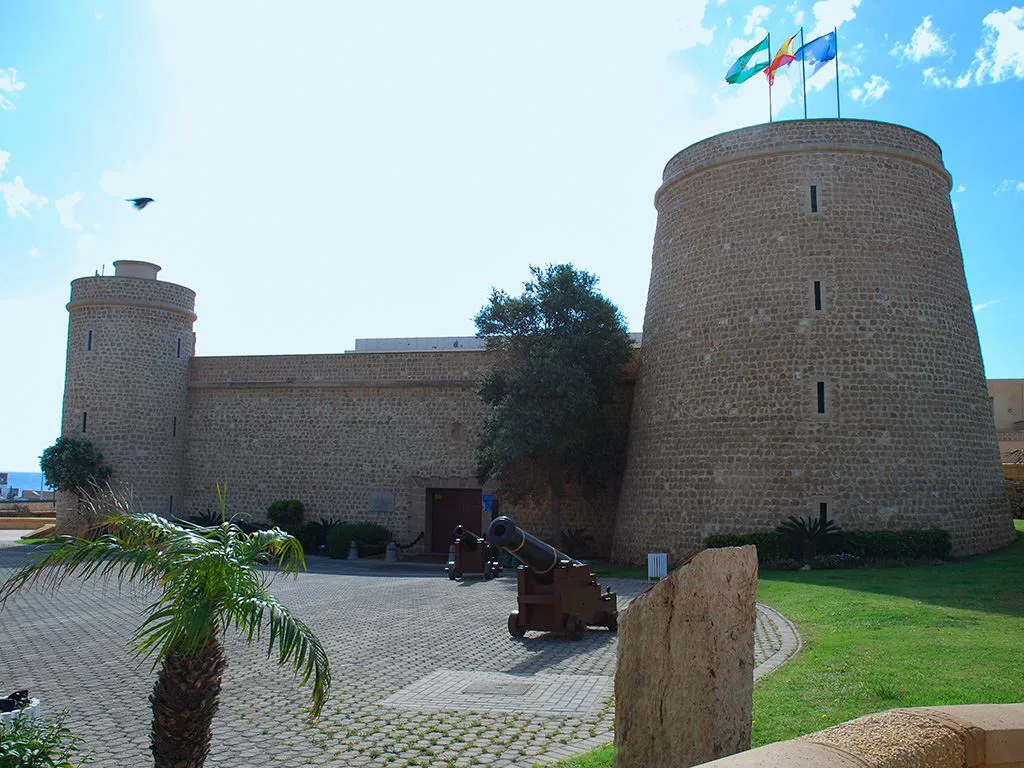The Castillo de Santa Ana, or Roquetas Castle, has had numerous face-lifts during its 700 year history.
By Nick Nutter | Updated 4 Jun 2023 | Almería | Places To Go |
Login to add to YOUR Favourites or Read Later


Overlooking the port of Roquetas de Mar, the recently renovated Castillo de Santa Ana, or Roquetas Castle, sits on a low promontory, the latest manifestation of a fortification that has stood on that spot for seven hundred years.


The first fortification was built by the Nazrid monarch, Yusuf I, in the early 14th century as part of the coastal defences of al-Andalus.


The Nazrid tower was falling into disrepair by the early 16th century when, primarily to secure the coast against pirates and protect the salt production and shipping industry, a square castle with turrets at each corner was built. Below it, where the port is now, was the jetty from which salt was loaded on to cargo ships.


Over the next hundred years the castle saw repeated actions, fighting off the Barbary pirates. Unfortunately the crown could not afford to pay for the fortification’s upkeep and it fell into disrepair exacerbated by an earthquake at the end of the 17th century. Despite its dilapidated state, the small force within the castle successfully held out against a half hearted attempt by an Anglo-Dutch force in 1705. The alliance objective was to take the castle as a preliminary move in the capture of Almeria during the War of the Spanish Succession (1701 – 1714). This action prompted some renovations about 1710.


18th Century New Build
In 1749, during the reign of Fernando VI, plans to renovate and strengthen the castle were drawn up by the engineer, Tomas Warluzel d’Hostel. The new build, finished in 1756, included a moat and drawbridge still evident today.


The Mystery of the Russian Cannon
Astute visitors will notice four cannons guarding the drawbridge access to the castle. The cannon, of various calibres, were all built in Russia. In 1817, Fernando VII of Spain, purchased a small fleet from Russia to reinforce the Spanish fleet that had been decimated during the Peninsula War and the following War of Independence. The guns from the reformed Spanish fleet were eventually distributed to towns throughout Spain. Four of them cropped up in Roquetas.
On the 18th August 1783, the tower containing the gunpowder magazine was struck by lightning. The resulting explosion destroyed the tower. Once again there was no money to repair the damage and the greater part of the castle finally crumbled to the ground during an earthquake on the 25th August 1804. The mound of stonework surrounding the single bastion that remained upright was plundered until 1910 when the council, deciding that the ruin had no further strategic value, cleared away the last of the rubble.
Memories of the original castle faded until, with the increased interest in history brought about by an influx of tourists, in 1997 plans were made to rebuild the Castillo de Santa Ana as it had been during its heyday during the 18th century. The rebuild was completed in 2003.
The reconstructed fortress now houses the works of artists from the province, temporary exhibitions and the beginnings of a local museum. The castle has been authentically replicated incorporating as much of the original, primarily an artillery battery, as possible.